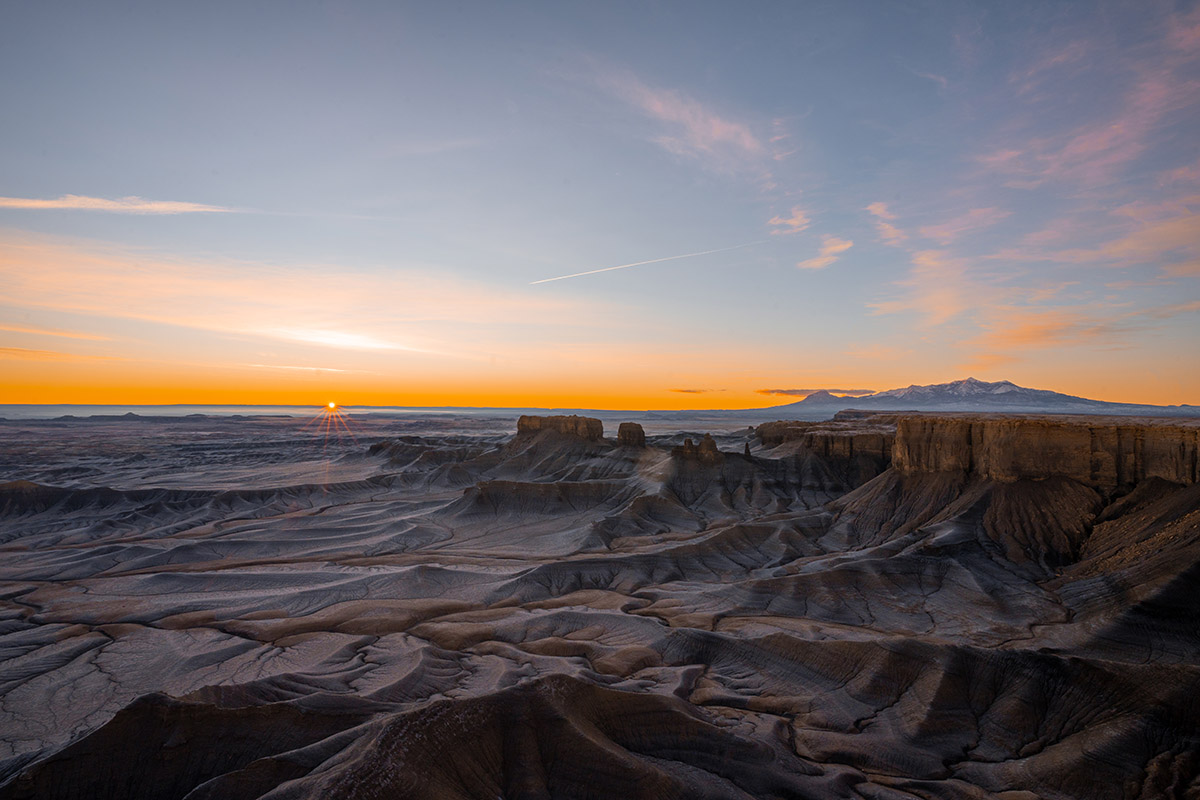Not-So-Final Destination
With the Tamron 20-40mm F/2.8 zoom, Jonny Hill captures the entire photographic journey—not just the last stop.
Share the article:
More Photo Tips | Video Gallery | Photo Gallery | Enewsletter sign-up
By Jenn Gidman
Images by Jonny Hill
Jonny Hill doesn’t concentrate solely on his ultimate destination when he heads out to take photos. “I’ve been trying to put the ‘adventure’ back into adventure photography, and so lately I’ve been focusing just as much on the journey as on my end point,” he says. “Looking for photo opportunities along the way stretches out the photographic experience for me. I end up more fulfilled, because I’m not just coming away with that final destination image.”
Accompanying Jonny on his journeys around the American Southwest, where he camps and hikes with his wife and toddler, is the Tamron 20-40mm F/2.8 Di III VXD zoom for his Sony mirrorless camera system, allowing him to capture photos both within the standard focal range and those on the ultra-wide end of the spectrum. “I already have the Tamron 17-28mm, which I love, but I rarely go wider than 20mm when I’m shooting landscapes,” he says. “The 20-40mm is perfect for my needs, especially because it pairs incredibly well with my Tamron 50-400mm Di III VC VXD ultra-telephoto zoom. My images with the 20-40mm are amazingly sharp, and at just 3.4 inches long and weighing only 12.9 ounces, it’s a compact lens that I can easily carry around all day. Plus, looking at the way it’s so far handled corners and chromatic aberrations, I have very high hopes for the astrophotography I plan on doing with it in the future.”
JONNY’S QUICK TIPS
• Add a human element.
Not only does this add a sense of scale—the kind of “hero” shot you see in, say, the image of my friend overlooking the snowy rock formations allows the viewer to place themselves in the scene and feel like they’re there in person. That human touch adds a personal level of contact.
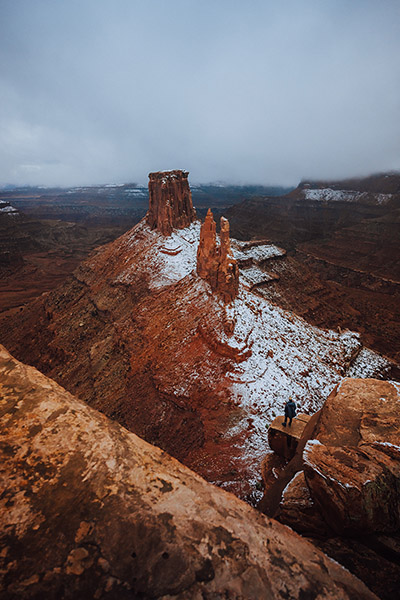
20-40mm (20mm), F/2.8, 1/60 sec., ISO 1250
Click image to view larger
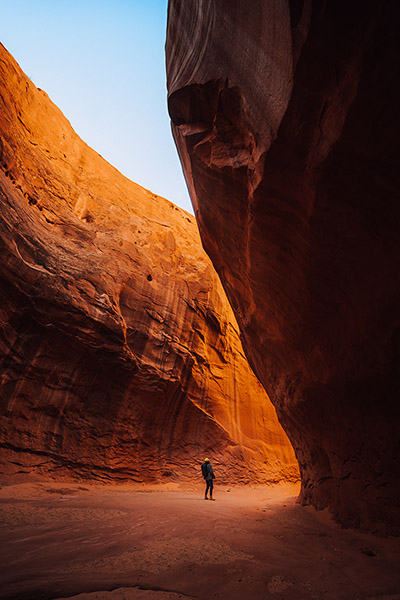
20-40mm (20mm), F/2.8m 1/160 sec., ISO 250
Click image to view larger
• Don’t discount the “b” shots.
I was shooting video at Delicate Arch, in Arches National Park, off to the left of the frame in the photo seen here. I’d set up my camera on an intervalometer on the other side, from a completely different perspective, and just let it keep running. I’ve taken photos over the years of the arch from that exact same vantage point, in different seasons, so I wanted to see what my camera would capture this time around. When I went through my files later on, I really liked this shot. Sometimes the easiest photos turn out the best.
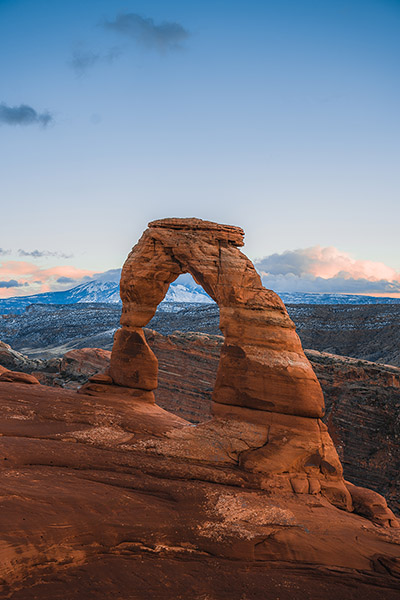
20-40mm (40mm), F/4.5, 1/60 sec., ISO 100
Click image to view larger
• Incorporate classic compositional elements.
One of my favorite locations to shoot is along the river in the desert you see here, about three hours from me in southern Utah. It’s a traditional leading line leading back to that eye-catching butte in the background, so beautifully complemented by the sky at sunrise.
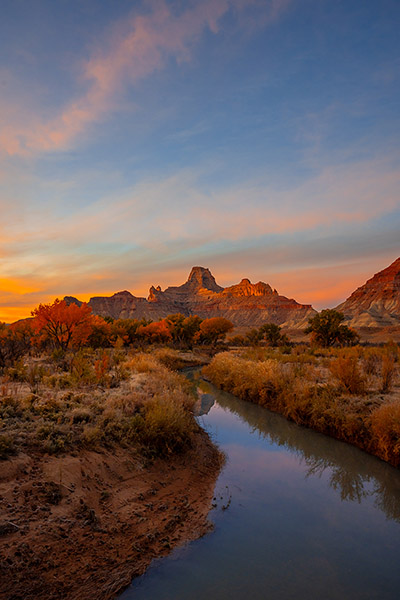
20-40mm (25mm), F/8, 1/50 sec., ISO 500
Click image to view larger
And then there’s the photo you see taken at peak golden hour in Colorado. The light was fantastic, but I was also drawn to how there was nearly a perfect, natural three-way split in the scene: The lower third was all shaded grass, the middle third the rock formation, and then the top third an almost completely clear sky. It all separated very organically.
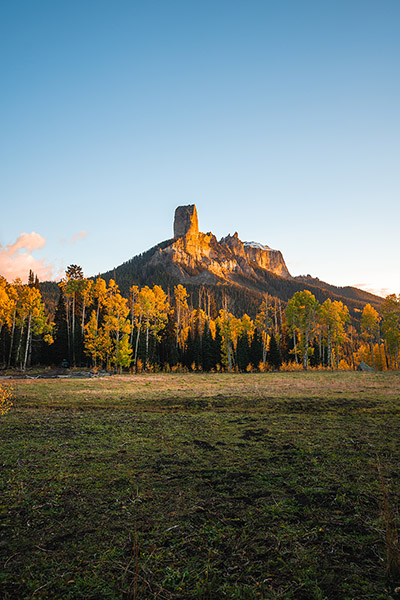
20-40mm (29mm), F/5, 1/30 sec., ISO 125
Click image to view larger
• Use a polarizer.
That’s what I did for my photo here of Lake Blanche, located in Utah’s Wasatch Mountains, to help enhance the reflection. This a grueling hike—about 6 miles roundtrip, with an almost 3,000-foot elevation gain—but I knew based on the conditions, there would be stellar photo opps. I’ve taken photos of the lake before, in the summer, so it was terrific to capture a winter scene there. There’d been a snowstorm just a couple of days earlier, so there was just the right amount of snow that allowed me to still see the rocks and trees.
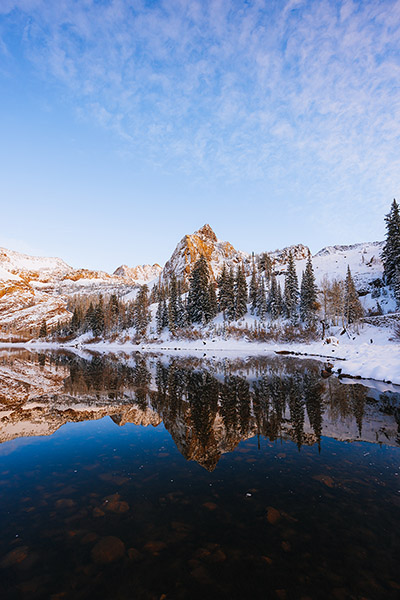
20-40mm (20mm), F/4.5, 1/800 sec., ISO 200
Click image to view larger
• Prepare to work quickly at sunrise and sunset.
In southern Utah, there’s an iconic stretch of landscape that the locals say looks like the moon-landing site. I’d wanted to capture a sunburst as the sun peeked over the horizon at sunrise, and I thought I had plenty of time. But after I set up my camera on my tripod and made sure my settings were correct, the sun suddenly started coming up very quickly. I had to scramble a bit and take my camera off the tripod, so I could squat down a bit lower and capture a cleaner sunburst. I wasn’t expecting things to move at that pace.
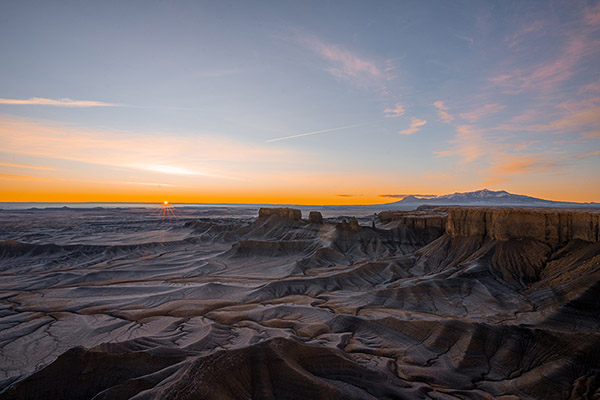
20-40mm (20mm), F/11, 1/40 sec., ISO 100
Click image to view larger
The same for the photo you see here of Mount Timpanogos, one of the most prominent mountain peaks in the Salt Lake Valley. This was probably the best sunset I saw of 2022, taken just a few hundred yards from my campsite—but I had to work fast!
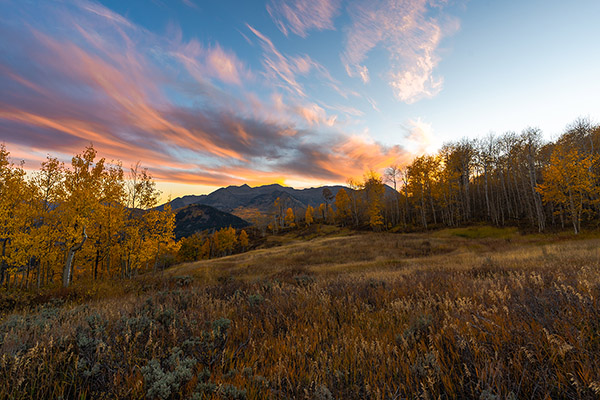
20-40mm (24mm), F/8, 1/13 sec., ISO 125
Click image to view larger
To see more of Jonny Hill’s work, check out his website and Instagram.
More Photo Tips | Watch Videos | Learn More About Tamron Lenses | Photo Gallery
